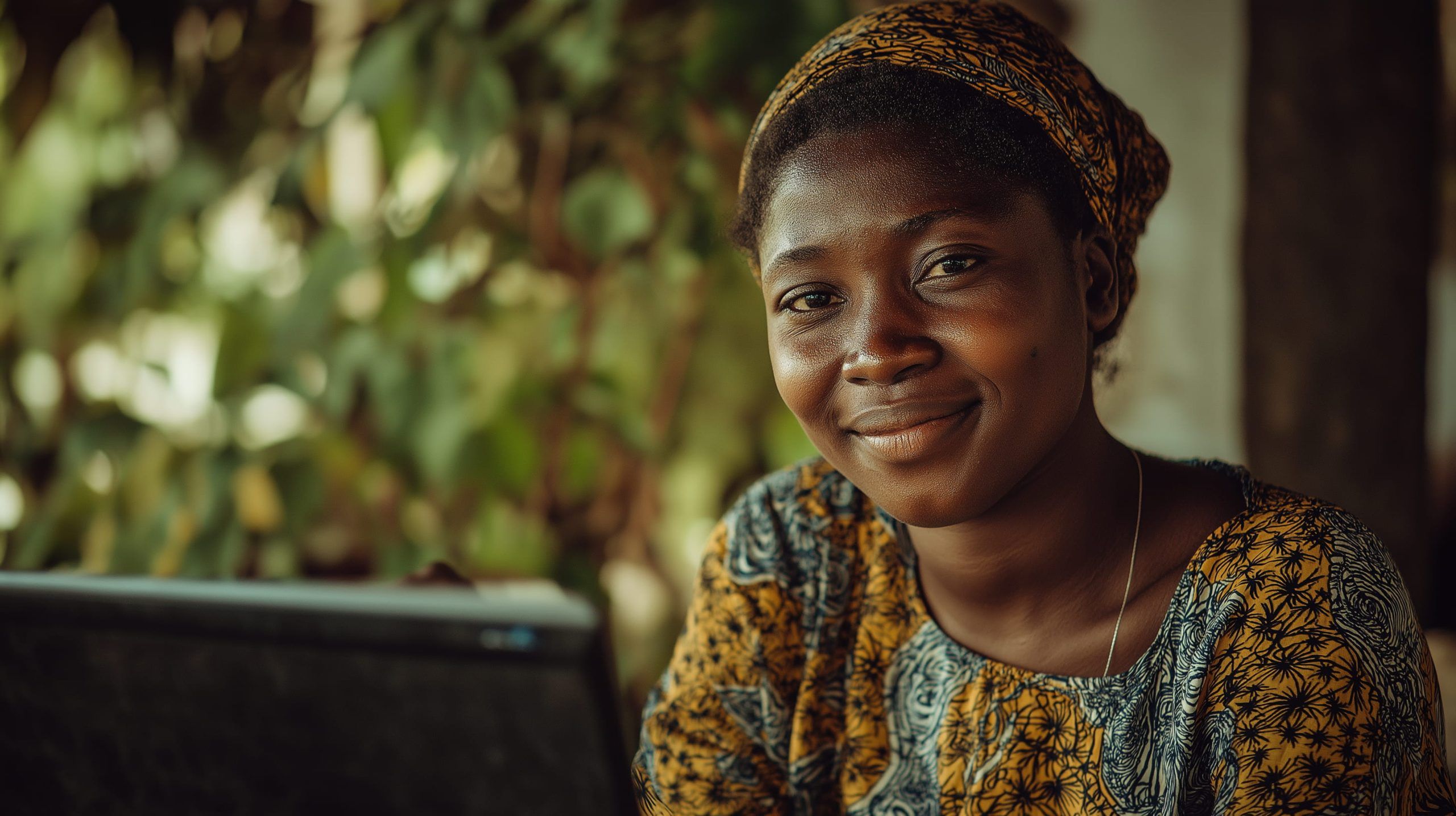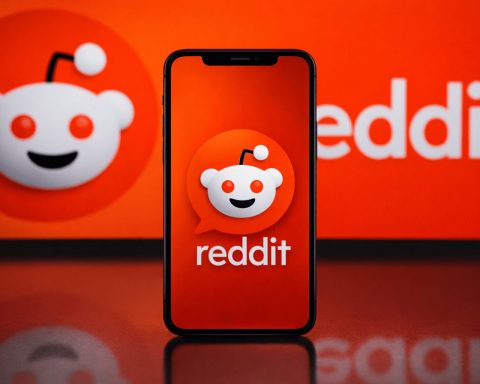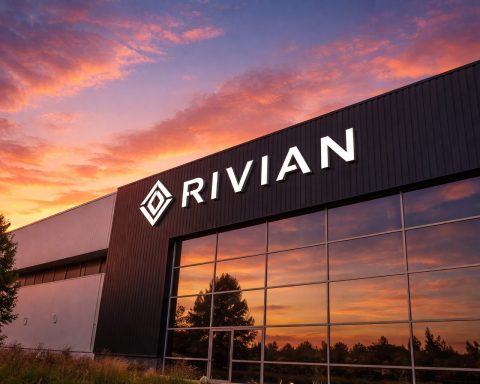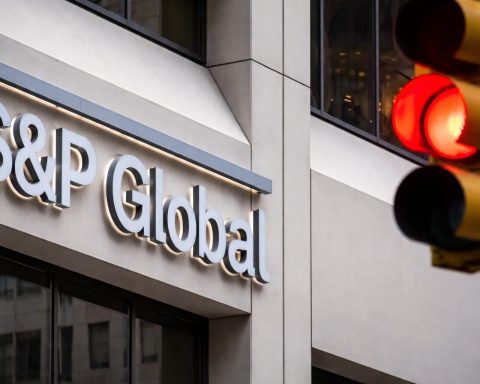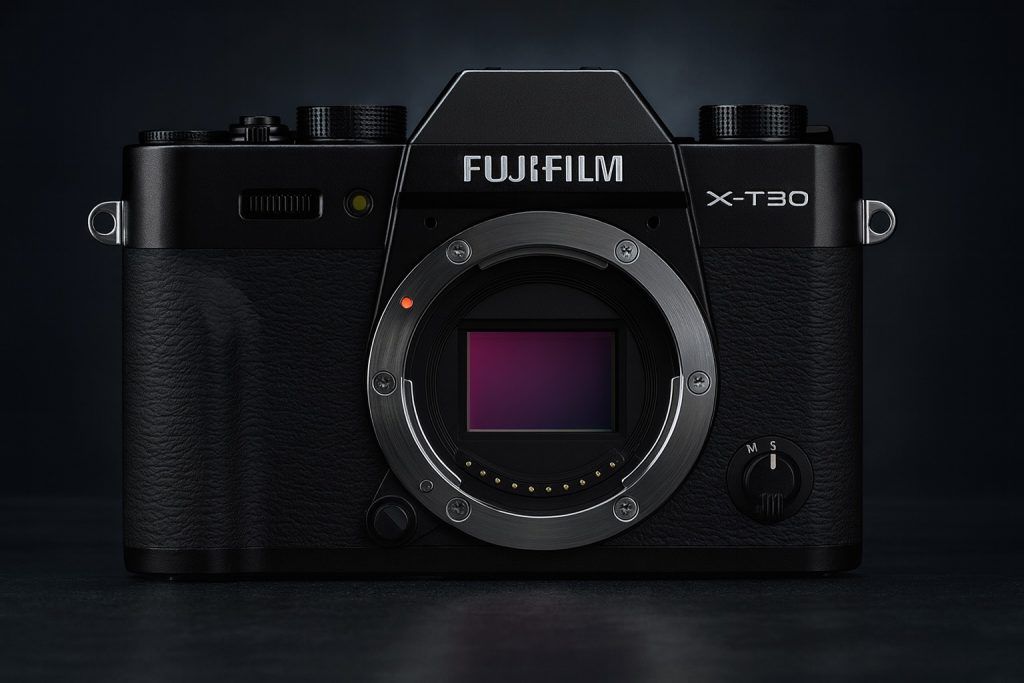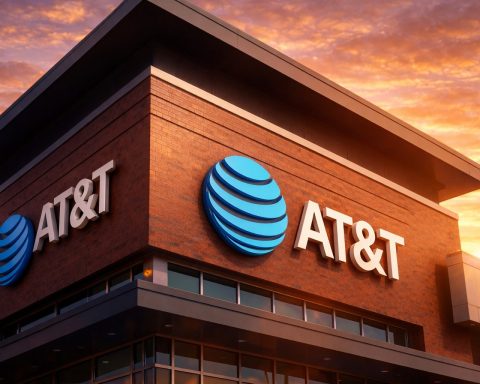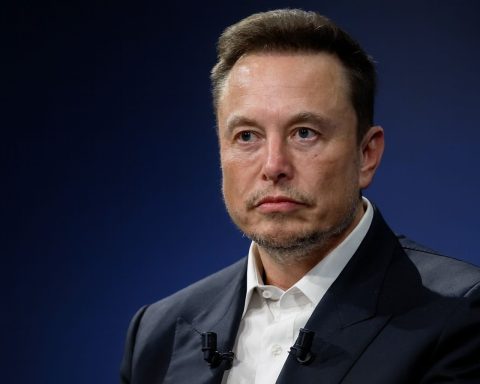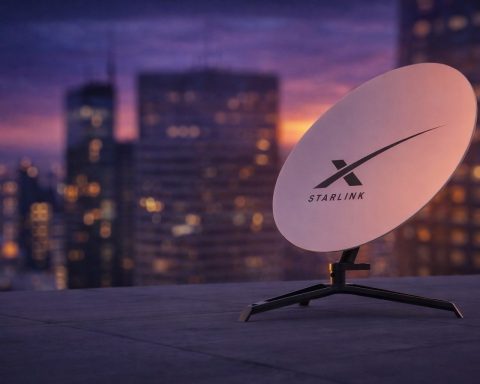- As of early 2025, about 1.8 million Sierra Leoneans used the internet, roughly 20% of the population.
- By 2024, 4G coverage reached about 79% of the population.
- The leading mobile operators are Africell, Orange (SL), and QCell, with the state-owned Sierratel in the process of privatization.
- Starlink arrived in Sierra Leone in 2023–2024, with hardware costing £150–£299 and a £75 monthly subscription, and it held about 2% of the ISP market by 2025.
- Cajutel Sarl has deployed fiber in Freetown and other cities, while One Broadband (formerly K3 Telecom) launched One Mobile and a limited 5G service.
- Orange SL reported that 4G-enabled cell sites reached 100% by 2023, signaling nationwide upgrade progress.
- The ACE submarine cable, landed in 2011, saw wholesale bandwidth prices fall about 60% from 2020 to 2024 after Zoodlabs took over management in 2021.
- Sierra Leone launched a National Broadband Strategy for 2023–2028 to expand infrastructure and digital inclusion.
- There is a stark urban-rural divide, with about 45% of people in urban areas and 55% in rural areas, and rural 3G/4G access historically limited.
- Basic mobile broadband affordability remains a hurdle, with typical data plans around 15.5% of the average monthly income.
Overview of Sierra Leone’s Internet Landscape
Sierra Leone’s internet connectivity is undergoing a slow but notable transformation. As of early 2025, roughly 1.8 million Sierra Leoneans were using the internet – just about 20% of the population [1] [2]. Mobile phones are the primary gateway to get online, with about 8.66 million cellular mobile connections active (almost equal to the population count) [3]. However, many of these mobile SIMs are used for basic voice/SMS services or held by people with multiple SIMs, so actual internet usage remains relatively low. In fact, an estimated 79% of the population is still offline as of 2025 [4], highlighting the significant digital divide that persists despite recent gains.
Mobile broadband (3G/4G) has become increasingly available, accounting for about 79% of all mobile connections [5]. This indicates that most active SIM cards are now on networks that can deliver data services. Yet being on a 3G/4G network doesn’t guarantee regular internet use – cost, coverage gaps, and device limitations mean many Sierra Leoneans remain disconnected in practice. Overall, the country’s internet landscape can be characterized as mobile-centric but underutilized, with connectivity largely concentrated in cities and major towns while rural areas lag behind.
Major Internet Service Providers and Technologies
Mobile operators dominate Sierra Leone’s ISP market, with three private carriers leading the pack: Africell, Orange (SL), and QCell [6]. Africell is the largest operator, followed by Orange, and then QCell – together they account for the vast majority of mobile subscribers. A legacy state-owned telco, Sierratel, also exists but has struggled for years and is in the process of being privatized to remain competitive [7]. These operators provide 2G voice and SMS services nationwide and have rolled out 3G and 4G LTE data networks in populated areas. As of 2024, 4G coverage reached about 79% of the population [8], meaning most urban and many semi-urban communities have access to at least one 4G signal. All three major mobile ISPs offer mobile data plans ranging from daily megabyte bundles to monthly packages of several gigabytes. For instance, in late 2023 a 1 GB monthly pack cost around NLe 20 (approximately US$1) on Africell [9]. Orange SL’s prices are comparable, reflecting a broadly similar pricing structure across the market [10] [11].
In terms of fixed-line and broadband providers, Sierra Leone has a handful of players focusing on fiber and wireless broadband in select areas. One notable entrant is Cajutel (SL) Sarl, which has been deploying fiber-optic networks in the capital and other cities. Cajutel offers high-speed fiber plans (with free installation and Wi-Fi routers on some packages) and has extended service to cities like Freetown, Port Loko, Lungi, Kambia and others [12] [13]. Another provider, K3 Telecom, operated a fixed-wireless network and recently rebranded as “One Broadband” while launching One Mobile, which it touts as West Africa’s first standalone 5G network [14]. This suggests K3/One is introducing limited 5G services (likely as fixed wireless access) alongside its fiber offerings. Moreover, both Africell and Orange have been expanding their fiber backbones to serve corporate customers and to improve network capacity. Africell, for example, provides fiber-to-the-premises in parts of Freetown to cater to business and residential users, and has plans for a nationwide fiber ring connecting major cities [15]. Orange SL also advertises fiber internet services for those within coverage areas [16]. Overall, fixed broadband is still not widespread – it’s mostly available to businesses or affluent households in the capital – but these initiatives signal early growth in the fiber broadband segment.
Satellite internet has emerged as a new player in Sierra Leone’s access mix. In mid-2024, SpaceX’s Starlink service went live in the country, making Sierra Leone the 100th nation globally to receive Starlink coverage [17]. Starlink’s low-Earth orbit (LEO) satellites can deliver high-speed, low-latency internet to even the most remote areas – a potential game-changer for rural connectivity. According to Starlink’s website, the hardware kit in Sierra Leone costs between £150–£299 (US$190–$380), and the monthly subscription is £75 (~US$95) [18]. While this price is steep for the average Sierra Leonean user, it offers unlimited high-speed data and has no long-term contract, targeting businesses, NGOs, and communities that lack any decent terrestrial service. Early indications show Starlink gaining a foothold (it was recorded at around 2% of the ISP market share by some estimates in 2025) as it begins serving niche users [19]. Apart from Starlink, traditional VSAT providers have long been an option in Sierra Leone – particularly for NGOs, banks or government offices in remote districts – but these legacy satellite connections are very expensive and limited in bandwidth. Starlink’s entry thus significantly increases the availability of satellite broadband, even if its high costs mean it’s not yet a mass-market solution.
Urban vs. Rural Coverage and Accessibility
Sierra Leone’s connectivity gap between urban and rural areas is stark. About 45% of the population lives in urban centers (notably Freetown and provincial capitals), while 55% reside in rural areas [20]. Internet access is far more prevalent in the cities: urban dwellers benefit from better coverage, faster speeds, and a choice of ISPs, whereas many rural communities either have only basic coverage or none at all. All major mobile operators have concentrated their 3G/4G network upgrades in cities and large towns. As a result, essentially all of Freetown and the larger towns enjoy 3G or 4G service, but deep rural villages often still rely on 2G voice networks or remain entirely unconnected. By one recent account, only 20% of surveyed rural localities had any 3G or 4G signal as of a few years ago, with the rest getting at best 2G coverage (good for calls/texts but not internet) [21] [22]. This indicates that roughly four in five rural communities lacked mobile broadband coverage until very recently. The government and operators are working to improve this: 4G population coverage has risen to nearly 80% [23], implying that many semi-rural areas and roadside settlements are now covered. Even so, remote villages off the main network grid remain underserved.
Urban areas also have the advantage of fixed broadband options (fiber, DSL or fixed-wireless) which are practically nonexistent in the countryside. In Freetown, one can subscribe to a fiber-optic home connection or a wireless broadband service from providers like Cajutel or One Broadband, something not yet feasible in rural districts. Urban users therefore tend to enjoy not only broader choice but also much higher speeds. By contrast, for the majority of rural Sierra Leoneans, if they have any internet access, it’s likely via a basic 2G/3G phone connection, which might only support very slow browsing or messaging. Satellite services like Starlink could theoretically serve rural users and bypass the need for ground infrastructure, and indeed Starlink’s arrival is aimed at “disadvantaged users in remote parts of the West African nation” [24] [25]. However, the cost of the Starlink equipment and subscription is prohibitive for most individual villagers, meaning it may initially be used in rural schools, clinics, or shared community hubs rather than widespread individual adoption.
The digital divide is therefore both a coverage gap and an affordability gap. Even where coverage exists outside urban areas, many villagers can’t afford smartphones or data plans to make use of it. By early 2025, internet penetration in rural Sierra Leone was still in the single digits as a percentage of the rural population, whereas the urban penetration rate was higher (urban residents are more likely to be online thanks to better network quality and incomes). Tackling this urban-rural disparity is a key challenge moving forward, as discussed in government strategy documents and donor programs focusing on rural connectivity.
Internet Speeds, Pricing, and Affordability
Where Sierra Leoneans do have internet access, the speeds are modest but improving. The average download speed in Sierra Leone (based on user tests) was about 17 Mbps in 2023 for both mobile and fixed broadband users [26]. In the best-connected parts of Freetown, 4G users can often get speeds in the tens of megabits per second – enough for streaming and video calls – and fiber-to-the-home customers can even reach up to hundreds of Mbps on premium plans. However, these averages hide a lot of variance. Many mobile data users experience much lower speeds due to network congestion, old devices, or weaker signals (especially at the edge of coverage in rural areas). By comparison, Starlink’s satellite broadband can deliver speeds of 50–150 Mbps, significantly higher than typical mobile network performance, but so far only a tiny number of users have access to such service.
Internet pricing in Sierra Leone is a major barrier for average consumers. Mobile data prices saw a sharp hike in late 2023, after the government and operators reached an agreement to increase tariffs [27]. As of November 2023, Africell’s new rates were around NLe 2 for 100 MB (one-day) and NLe 20 for a 1 GB monthly bundle [28]. Larger monthly packages included 6 GB for NLe 120 and 15 GB for NLe 300 [29]. (For reference, 1 New Leone (NLe) is roughly equivalent to US $0.04–$0.05 in 2025, so 1 GB for NLe 20 is about $0.95.) Orange SL’s data bundles are in a similar range (e.g. 2.6 GB for around NLe 52, or roughly $2) [30]. On the surface, these prices per GB are cheaper than in many countries; however, the affordability must be viewed in context of local incomes. The average Sierra Leonean has a very low income (the country is classified as low-income and least developed [31]), so even spending a few leones on data can strain the budget. A global affordability benchmark showed that a basic mobile broadband plan (defined as a low-volume data package over 3G) costs about 15.5% of an average monthly income in Sierra Leone [32]. This is vastly above the affordability target of 2% (recommended by the UN Broadband Commission) and means that regular internet use is effectively out of reach for many citizens. In practical terms, a rural laborer or student might only be able to afford a few hundred MB of data per month, if any at all, without sacrificing other necessities.
The high cost of data stems from various factors: limited competition (only a couple of big operators), high operating costs for telecoms (e.g. diesel for cell towers, international bandwidth costs), and taxes on telecom services. There have been positive developments on the cost front at the wholesale level – the price of international bandwidth has dropped significantly since the country connected to the ACE submarine fiber cable. In fact, between 2020 and 2024, the wholesale internet bandwidth price fell by about 60% [33]. This has allowed ISPs to gradually offer more data for the same price to end users. Additionally, the average price of a fixed broadband connection (for those who can get one) has declined; for example, the monthly fee for a 10 Mbps home fiber plan has come down substantially as infrastructure expanded (one report suggests a sharp reduction alongside a near-tripling of fiber subscriptions) [34]. Despite these improvements, affordability remains a top concern. Many Sierra Leoneans still see mobile internet as a luxury or use it sparingly – e.g. relying on free Facebook basics or WhatsApp text messages when possible, and avoiding data-heavy content.
Internet Penetration Rates and Growth Trends
Internet penetration in Sierra Leone is growing, but at a slow pace relative to global averages. Official ITU and World Bank estimates put the share of individuals using the internet at around 19–21% of the population in recent years [35] [36]. The growth has been steady but incremental: for instance, from January 2024 to January 2025 the number of internet users in the country increased by only about 42,000 people, a 2.4% year-on-year increase [37]. At that rate, it will take many years for even half the population to come online. The slow growth is attributable to the underlying challenges of cost, coverage, and digital literacy. Essentially, those who can easily get online (urban, educated, higher-income individuals) have mostly done so already; the remaining offline population is the harder-to-reach segment – poorer, rural, or otherwise marginalized groups for whom special efforts are needed to bring online.
It’s worth noting that Sierra Leone’s government has reported more optimistic figures in the past – for example, citing internet penetration rising from 12% in 2018 to 25% in 2020 and 46% in 2022 [38]. These higher numbers likely used a broader definition (perhaps counting anyone with a SIM card or “potential” internet access, rather than regular users). By the stricter definition of active individual usage, penetration is around one-fifth of the population. The mobile phone penetration, however, is very high when counting SIM cards – effectively near 100% of the population has a mobile connection of some kind [39]. This suggests that the basic foundation for digital growth (mobile ownership) is in place, but converting basic phone users into internet users is the key hurdle.
Encouragingly, the underlying mobile broadband infrastructure is expanding and improving. The share of mobile connections that are 3G/4G capable climbed to 79% by 2025 [40], up from around 70% a couple of years earlier. Both Africell and Orange have been upgrading their network coverage and capacity. There are even early moves toward 5G – Orange Sierra Leone ran the country’s first 5G test in 2023 [41], and by 2025 a local ISP (One Mobile, as mentioned) launched a limited 5G service. These developments, while nascent, signal that Sierra Leone does not intend to remain far behind technologically. The impact on penetration from 5G will be negligible in the short term (since 5G devices and coverage are extremely limited), but over the long term it could deliver broadband to areas lacking fixed lines. For now, 4G LTE is the fastest and most widespread internet access technology for ordinary consumers, and expanding 4G to more rural zones will likely have the biggest near-term effect on user growth.
Another growth trend is the increasing importance of social media and mobile apps. Sierra Leone had about 1.15 million social media users (roughly 13% of the population) in 2025 [42]. Platforms like Facebook (and its Free Basics version), WhatsApp, and YouTube are popular among those online. This social media uptake often drives others to get online as well (e.g. people buying data to use WhatsApp to communicate). The government and private sector are also promoting digital services – such as mobile banking, e-learning, and e-government portals – which can further spur internet adoption once accessibility improves.
Role of Satellite Internet (Starlink vs Terrestrial Options)
Satellite internet is playing an increasingly visible role in Sierra Leone’s connectivity strategy, particularly for reaching remote areas that are hard to serve with terrestrial networks. The arrival of Starlink in 2023–2024 marked a turning point. Unlike traditional geostationary satellites, Starlink’s constellation of low-earth-orbit satellites can deliver broadband with much lower latency and relatively high speeds. Starlink is seen as a complementary solution rather than a direct competitor to the mobile operators. It shines in scenarios where laying fiber or building cell towers isn’t economically feasible – for example, small islands, isolated villages, mining sites, or disaster recovery communications. The government’s licensing of Starlink (NATCA approved it in 2023) was partly motivated by a desire to bridge the connectivity gap for rural schools and health centers. Starlink’s own promotion highlighted that it can “extend broadband connectivity to disadvantaged users in remote parts” of Sierra Leone [43] [44]. Already, Starlink kits have been delivered to the major cities (Freetown, Bo, Kenema, Makeni) for distribution, and early adopters such as tech entrepreneurs, NGOs, and international agencies have begun piloting the service.
In terms of performance, Starlink offers speeds between 50–200 Mbps, far outpacing typical 4G mobile speeds in Sierra Leone, and with latency around 20-40 ms (good enough for video calls and even online gaming). Terrestrial mobile networks, by contrast, might deliver 5–20 Mbps in many areas with higher latency, and they often suffer from congestion. Where cost is no object, satellite internet currently provides the best connectivity available in Sierra Leone. But cost is a crucial factor – at nearly $100 per month, Starlink’s subscription is many times more expensive than a basic mobile data plan. Moreover, the upfront hardware fee (around $300 for the dish) is a barrier. Therefore, for the average citizen, mobile data remains the only affordable option, even if it’s slower. We can expect that satellite internet will serve as a niche solution in the near term: valuable for businesses, government connectivity in remote outposts, and possibly community Wi-Fi hubs (where one Starlink dish is shared among many users). There are also other satellite providers (such as Avanti or YahClick) that have been active in West Africa; they offer VSAT terminals for broadband, though usually at enterprise-level pricing. These haven’t been widely adopted beyond specific institutional users. Starlink’s competitive advantage is its higher bandwidth and easier self-installation, which could gradually eat into the VSAT market and bring more competition to backhaul in rural regions.
It’s also worth noting that Sierra Leone’s geography – a relatively small country (~72,000 km²) with a decent road network along many areas – means terrestrial solutions (like microwave relays and fiber backbones) can reach most regions if investments are made. In the long run, extending fiber and mobile coverage will likely connect the majority of the population more affordably than individual satellite subscriptions. Still, satellite internet serves as an important part of the mix, ensuring no location is truly unreachable. The government appears keen on leveraging all options: terrestrial networks for mainstream connectivity and satellite for filling the toughest gaps.
Government Policies and Digital Development Initiatives
The Government of Sierra Leone has recognized digital connectivity as a key development priority and has introduced several policies and initiatives to expand internet access. A major step was the formulation of a National Broadband Strategy (2023–2028), which lays out a roadmap for improving infrastructure, affordability, and digital inclusion. In recent years, the government has overhauled the regulatory framework governing telecommunications: in 2021, new regulations were enacted for licensing, spectrum management, quality of service, and SIM registration, and in 2022 the National Communications Authority Act was revised [45] [46]. These reforms created what officials call a “conducive regulatory environment” to encourage investment by ISPs [47] [48]. The impact has been positive so far – by the government’s own account, mobile network coverage and internet usage improved significantly from 2018 to 2022 under the updated policies [49].
One tangible project was the partnership to monetize and improve the country’s only submarine fiber optic cable link. Sierra Leone is connected to the global internet primarily via the Africa Coast to Europe (ACE) submarine cable, which landed in 2011 (often cited as 2009 when the project started) [50]. Initially managed by a public company (SALCAB), the cable’s capacity was underutilized. In 2021, the government brought in a private firm, Zoodlabs, through a public-private partnership to manage and invest in the cable infrastructure. This move resulted in the drastic wholesale price reductions mentioned earlier, as well as better maintenance of the backbone. Zoodlabs didn’t stop at undersea bandwidth; it also engaged in last-mile solutions, notably collaborating with CrossBoundary Energy in 2025 to launch solar-powered 5G towers in Freetown [51] [52]. This initiative, unveiled at a Digital Government Summit, merges the push for broader connectivity with renewable energy, addressing two challenges at once. The first five 5G sites funded by this project are coming online in the capital, showcasing new technology and providing a testbed for high-speed services [53]. While a full 5G rollout is far from national reality, this signals strategic intent from both government and private sector to “leapfrog” where possible and adopt innovative solutions (especially ones that solve the power constraints of telecom infrastructure via solar energy).
Another policy focus is on universal access. The Universal Access Development Fund (UADF) has been used to finance rural connectivity projects, such as constructing telecom towers in underserved chiefdoms and providing connectivity to schools. For example, there have been projects bringing coverage to communities like Sogballeh (reaching thousands of residents who previously had none) [54]. The Ministry of Information and Communications (now part of the Ministry of Communication, Technology and Innovation – MoCTI) regularly emphasizes bridging the digital divide in its strategies. They have set targets for increasing rural network coverage and have been encouraging infrastructure sharing among operators to reduce duplication costs in low-margin areas. A policy of tower sharing and open access to fiber infrastructure is being promoted so that smaller ISPs or new entrants can piggyback on existing networks rather than each building their own.
International partners are also deeply involved. The World Bank is funding a Digital Transformation Project that includes components for expanding rural broadband and e-government services [55] [56]. The U.S. Trade and Development Agency (USTDA) provided a grant in 2023 for a feasibility study with Africell to design a 1,600 km national fiber backbone network connecting 32 cities and towns [57]. That study will map out technical and economic plans to lay fiber rings across the country, which would dramatically improve backhaul capacity for mobile networks and enable future fixed broadband expansion [58] [59]. Sierra Leone is aligning with regional initiatives as well, participating in the ECOWAS Wide Area Network programs and engaging with the Alliance for Affordable Internet on policy best practices. On the regulatory front, the National Communications Authority (NatCA) is enforcing quality of service standards and recently implemented SIM card registration to improve security and reduce fraud [60]. The government also passed a Cybersecurity and Crime Act and a Data Protection law in 2021 to build trust in online services [61].
Crucially, the government is trying to incentivize the private sector while stepping back from direct operation. The plan to privatize Sierratel (the state ISP) in 2024 is one example [62]. By selling or partnering Sierratel with a private investor, the hope is to inject capital and efficiency to turn it into a viable competitor, thus improving overall market competition. Currently, the Internet Society’s assessment rates Sierra Leone’s market competitiveness for internet services as “poor” [63], indicating that more players or stronger competition is needed to drive down consumer prices and improve service quality. Policymakers are aware of this and are cautiously opening the market to new technologies (like Starlink and, presumably, other innovative ISPs) to shake up the status quo.
Key Challenges to Expanding Access
Despite the progress and plans, Sierra Leone faces stubborn challenges in expanding internet access:
- Infrastructure Deficit: Building out communications infrastructure is costly and slow. Large portions of the country still lack fiber optic cables, microwave relay links, or even road access in some cases. Rolling out new cell towers to every rural village faces hurdles like difficult terrain, low population density (making the investment hard to recoup), and the expense of transporting equipment. Even where towers exist, providing them with reliable power is problematic – national grid electricity is limited outside urban centers, so mobile sites depend on diesel generators or solar panels. Fuel costs and maintenance issues (like generator theft or breakdown) make it hard to keep networks running 24/7. The renewable energy 5G project is an attempt to solve this, but scaling that model nationwide would require substantial capital and coordination [64] [65].
- Economic Constraints: Sierra Leone is one of the world’s poorest countries. The majority of people live on very low incomes, especially in rural areas. This means even if internet service is available, many cannot afford smartphones or data plans. The cost of even a “cheap” Android smartphone (maybe around $30-$50) is out of reach for families struggling to meet basic needs. Additionally, literacy and digital skills are barriers – an estimated only around half of adults are literate, and digital literacy is even lower. So expanding internet access isn’t just about network signals; it’s about making people capable of using online services and seeing value in them. The government and NGOs have initiated some digital literacy and ICT training programs, but coverage is limited.
- Market Dynamics: The ISP market in Sierra Leone, as noted, is highly concentrated. With essentially two giant mobile operators (Africell and Orange) and one smaller one (QCell), there is a risk of duopoly behavior. The two big players might have little incentive to lower prices aggressively or venture into very remote areas that won’t turn profits. They also both rely on the same upstream international cable and face similar cost structures, which can limit competitive pricing. While new entrants like One Mobile and Starlink bring hopeful signs, their impact on competition will depend on scale. Furthermore, heavy government taxes on telecom services (including excise taxes, import duties on telecom equipment, etc.) can inadvertently make internet access more expensive. Regulatory bureaucracy or delays in approving new licenses could also slow expansion.
- Geographical and Logistical Issues: Sierra Leone’s heavy rainy season and sometimes difficult terrain (thick jungles, mountains in the east) pose practical challenges to infrastructure. Laying fiber or maintaining cell towers in remote districts can be hindered by flooding or poor road access. The country’s border regions and small islands (like Bonthe) are especially tricky. During the rains, some areas get cut off, making consistent service hard. These factors increase the cost-to-serve per user in rural Sierra Leone.
- Infrastructure Resilience: The Internet Society’s “resilience score” for Sierra Leone’s internet is only 31% (low) [66] [67]. This reflects vulnerabilities in the network – for instance, a single point of failure on the submarine cable or the limited number of international connections. If the one undersea cable experiences an outage, the country could be largely knocked offline, since backup via satellite or cross-border fiber is minimal (currently, there’s fiber reaching the Guinea border, but it’s not clear if a high-capacity link is active) [68]. Domestic infrastructure is also fragile: power outages, accidental fiber cuts, and limited data center facilities (just one major data center in operation nationally [69]) all threaten reliable connectivity. Improving resilience will require diversifying both the international bandwidth sources (e.g., a second submarine cable or robust satellite backup) and strengthening the internal network redundancy.
- Regulatory and Bureaucratic Hurdles: Although the policy environment has improved, investors may still face bureaucratic hurdles like slow permit approvals, unclear spectrum allocation processes, or challenges in obtaining rights of way for laying cables. The government must ensure that policies on paper translate to ease of doing business in practice for telecom projects. Any heavy-handed regulation or political interference could deter the very investments needed to expand access.
Notable Progress and Success Stories
Amid the challenges, Sierra Leone has had several success stories in its journey to improve internet access:
- Submarine Cable & Wholesale Bandwidth: The activation of the ACE submarine cable and its improved management is a cornerstone success. By leveraging that international link, Sierra Leone slashed the wholesale cost of internet capacity by 60% from 2020 to 2024 [70]. This not only allowed operators to offer cheaper data (relative to a few years ago) but also attracted new ISP entrants who could buy bandwidth more affordably. The effects can be seen in Freetown where home broadband options exist now that were unheard of a decade ago.
- 4G Network Expansion: Both Africell and Orange have achieved nationwide 4G coverage on most of their cell sites. In fact, Orange announced that 100% of its cell sites are now 4G-enabled as of 2023 [71]. This means even many small towns now have access to fast mobile internet (where backhaul links allow). The expansion of 4G has improved user experience dramatically in areas that previously had only sluggish 2G/EDGE. Average mobile speeds increased and latency decreased as 3G/4G spread. The competition to offer the best network also led Africell to invest in a modernized IP backbone in 2022, improving network reliability and capacity [72].
- Innovative 5G Pilot Powered by Solar: In 2025, Sierra Leone made headlines by launching Africa’s first renewable-powered 5G network on a pilot basis [73]. The project by Zoodlabs and CrossBoundary installed five 5G towers in Freetown that run primarily on solar energy and battery storage, with minimal generator use [74] [75]. This is a double win: showcasing cutting-edge 5G technology and doing so with green energy in a country plagued by electricity shortages. While still in early stages, the initiative is a proof-of-concept that could be scaled up. It’s particularly significant because it points to a solution for powering rural telecom sites sustainably (sunny Sierra Leone is well-suited for solar power). As the Zoodlabs CEO put it, “We’re not just building mobile networks; we’re laying the groundwork for economic growth”, linking digital expansion with broader development goals [76].
- Public-Private Partnerships and Investments: The willingness of government to engage partners has yielded results. The USTDA-funded feasibility study with Africell is one example of securing international support to plan big infrastructure [77]. Another example is the privatization of SALCAB’s operations to Zoodlabs, which injected capital and expertise into the sector. Even the pending privatization of Sierratel, although controversial to some, is intended to revitalize the company so that its assets (like remaining fixed lines or spectrum) can be better used to serve customers [78]. In addition, the government has launched initiatives like tech hubs and innovation centers (often with NGO or donor help) to spur local content and demand for connectivity. For instance, the introduction of an e-government digital ID system and online portals for certain government services has begun, which can motivate citizens to come online to access these services.
- Fiber Expansion to New Areas: ISPs like Cajutel have rolled out fiber optics beyond just the capital. The fact that fiber connectivity is now present in secondary cities (e.g. Port Loko, Kambia, Bo, etc.) [79] is a significant improvement. It not only benefits local businesses and institutions in those towns but also provides a backbone to eventually connect surrounding rural areas (via Wi-Fi or LTE fixed wireless) to that fiber node. The expansion of a fiber “backbone ring” as planned by Africell will further strengthen these efforts [80].
- Reduction in Digital Isolation: Sierra Leone used to be considered quite isolated in terms of internet routing and content. The Internet Society noted that only 1% of the most-visited websites have a locally cached presence in Sierra Leone [81] [82] (meaning most content had to be fetched from overseas, adding latency). Efforts are underway to improve local caching and maybe establish an Internet Exchange Point (IXP) for the country. Additionally, the country has one certified Tier III data center which can host local servers [83], and more banks and companies are hosting services locally. While these may seem minor, they contribute to better performance and resilience. The country also notably experienced zero government-induced internet shutdowns in the last year [84], reflecting a stable political will to keep the internet open (some countries in the region have suffered periodic shutdowns, so avoiding this is a positive sign for users and investors).
Each of these successes builds momentum. Sierra Leone’s overall internet resilience and usage metrics are still low, but the trajectory is upward. The combination of policy reforms, targeted projects, and technology innovation is gradually chipping away at the barriers.
Conclusion
Sierra Leone stands at a pivotal point in its internet development journey. The foundations – a conducive regulatory environment, improved backbone infrastructure, and near-ubiquitous mobile coverage – have largely been laid. The challenge now is to translate these into affordable and widespread access that benefits the average citizen, not just those in Freetown or with deep pockets. There is optimism that with continued public-private collaboration, the gap can be narrowed: initiatives like the nationwide fiber backbone, rural solar-powered sites, and the introduction of satellite broadband all complement each other in reaching the unreached.
In summary, the country’s internet landscape is one of high potential amid persistent gaps. Mobile data services are spreading fast but usage is held back by cost and coverage issues; fixed broadband is emerging in cities, offering a glimpse of high-speed connectivity; and satellite internet has arrived to connect the hardest-to-reach corners. Government strategies are in place focusing on digital inclusion, and early wins (like cheaper bandwidth and new tech pilots) show what’s possible. The coming years will be critical to convert this momentum into real gains in internet penetration. If Sierra Leone can sustain progress – keeping data prices in check, incentivizing network investment, and embracing innovative solutions – it may well turn its nascent internet revolution into a true success story of bridging the digital divide. The vision of a connected Sierra Leone, where a majority of citizens can access online information, educational resources, e-health and e-commerce, is gradually moving from dream to reality. Each new 4G tower lit up in a rural village or school connected via Starlink is a step closer to that reality, carrying the promise of broader opportunity and inclusion for Sierra Leone’s communities in the digital age.
Sources: Recent data and reports were used to ensure up-to-date insights, including DataReportal digital reports [85] [86], the Internet Society’s country statistics [87] [88], news from Sierra Leonean outlets [89] [90], and international analyses on developments like Starlink’s launch [91] and the renewable 5G project [92] [93]. These sources collectively provide a comprehensive view of the current state and trajectory of internet access in Sierra Leone.
References
1. datareportal.com, 2. datareportal.com, 3. datareportal.com, 4. datareportal.com, 5. datareportal.com, 6. sierraloaded.sl, 7. sierraloaded.sl, 8. pulse.internetsociety.org, 9. sierraloaded.sl, 10. sierraloaded.sl, 11. sierraloaded.sl, 12. btw.media, 13. btw.media, 14. www.premiermedia-sl.com, 15. ayvnews.com, 16. pine-networks.com, 17. www.connectingafrica.com, 18. www.connectingafrica.com, 19. pulse.internetsociety.org, 20. datareportal.com, 21. mocti.gov.sl, 22. mocti.gov.sl, 23. pulse.internetsociety.org, 24. www.connectingafrica.com, 25. www.connectingafrica.com, 26. pulse.internetsociety.org, 27. sierraloaded.sl, 28. sierraloaded.sl, 29. sierraloaded.sl, 30. sierraloaded.sl, 31. pulse.internetsociety.org, 32. pulse.internetsociety.org, 33. www.forbesafrica.com, 34. www.forbesafrica.com, 35. datareportal.com, 36. fred.stlouisfed.org, 37. datareportal.com, 38. mocti.gov.sl, 39. datareportal.com, 40. datareportal.com, 41. extensia.tech, 42. datareportal.com, 43. www.connectingafrica.com, 44. www.connectingafrica.com, 45. mocti.gov.sl, 46. mocti.gov.sl, 47. mocti.gov.sl, 48. mocti.gov.sl, 49. mocti.gov.sl, 50. mocti.gov.sl, 51. www.techloy.com, 52. www.techloy.com, 53. www.techloy.com, 54. uadf.gov.sl, 55. documents1.worldbank.org, 56. documents1.worldbank.org, 57. www.ustda.gov, 58. www.ustda.gov, 59. www.ustda.gov, 60. mocti.gov.sl, 61. mocti.gov.sl, 62. sierraloaded.sl, 63. pulse.internetsociety.org, 64. www.techloy.com, 65. www.techloy.com, 66. pulse.internetsociety.org, 67. pulse.internetsociety.org, 68. mocti.gov.sl, 69. pulse.internetsociety.org, 70. www.forbesafrica.com, 71. thesatellitenews.com, 72. pine-networks.com, 73. futureofenergy.co.ke, 74. www.techloy.com, 75. www.techloy.com, 76. www.techloy.com, 77. www.ustda.gov, 78. sierraloaded.sl, 79. btw.media, 80. ayvnews.com, 81. pulse.internetsociety.org, 82. pulse.internetsociety.org, 83. pulse.internetsociety.org, 84. pulse.internetsociety.org, 85. datareportal.com, 86. datareportal.com, 87. pulse.internetsociety.org, 88. pulse.internetsociety.org, 89. sierraloaded.sl, 90. sierraloaded.sl, 91. www.connectingafrica.com, 92. www.techloy.com, 93. www.techloy.com
